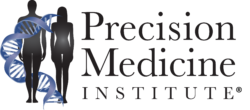Turning toward population DNA testing for disease risk, healthcare organizations will soon see low-cost clinical-grade genetic screening options
Genomics, oncology, epidemiology, clinical genetics, and health policy experts in Australia are promoting a new low-cost tool that they say will save healthcare dollars, reduce hospitalizations, and warn people early of their risk of developing certain cancers.
Made available by the $20 billion Medical Research Future Fund (MRFF) through Australian Government Public Health, a grant of just under $3 million will allow individuals to be screened for certain genetic cancers.
Australia’s preventive population screening program will use a newly developed low-cost DNA test that can detect hereditary breast–ovarian cancer syndromes (HBOC) and hereditary nonpolyposis colorectal cancer (Lynch syndrome). Both categories of cancer have a strong genetic predisposition, and testing for the genes influencing these two categories would enable the detection of multiple types of potentially fatal cancers before they begin to develop.
The MRFF grant was awarded to a research team led by Paul Lacaze, PhD, a population genomic researcher and associate professor at Monash University based in Melbourne, Victoria, Australia. “This will help empower young Australians to take pro-active steps to mitigate risk, for earlier detection, surveillance from a younger age, and prevention of cancer altogether,” Lacaze said in a recent press release.

“This type of preventive DNA testing will not only save lives, but also save the Australian public healthcare system money by preventing thousands of cancers,” stated Lacaze as part of the announcement.
Cost-Effectiveness of Preventive Population Genomic Screening
The new clinical genetic test, called DNACancerScreen, will be offered to all Australians between the ages of 18 and 40, instead of only being offered to select patients with a family history of cancers in the two categories being tested. This more inclusive approach will help to identify at-risk patients who may otherwise have their risk unrecognized until they have an advanced cancer.
The total investment for such a preventive population screening program may include screening, confirmation testing, genetic counseling, ongoing surveillance, and interventions for all identified pathogenic variant carriers, Lacaze and others explain in an analysis published in Nature Genetics in Medicine. Two years ago, a related cost-effectiveness model was developed.
Another step calculated the cost-effectiveness of population genomic screening using a per-test cost of AUD$400 and willingness-to-pay (WTP) threshold of $50,000/DALY (disability-adjusted life years), compared with targeted testing. The details of which will be interesting to hospital CEOs.
“Whilst genetic tests have been available for these cancer predisposition syndromes for many years, they’ve only been offered to a very small number of people,” Lacaze explained as part of the statement. “My vision is to use them in a far more widespread, scalable and preventive way, to find far more people in the population at high risk, offering them access to preventive care and informed decision making far earlier.”
More Population Genomic Screening Initiatives in the Making?
According to Monash University, this initiative could help make Australia the first nation in the world to offer preventive genetic screening through its public healthcare system. This precision medicine-driven approach has the opportunity to be the first nationally available precision medicine screening program of its kind.
In the US, several population-based biobanks and health systems also are using genetic testing in clinical practice, for pathogenic and likely pathogenic variants associated with hereditary breast and ovarian cancer, Lynch syndrome, and familial hypercholesterolemia. Recent experience and publications on population-based screening for selected adult genetic diseases from two groups, the Geisinger Health System and Nevada Genome Project, were featured during a September 2020 Centers for Disease Control and Prevention (CDC) webinar.
At Geisinger, the MyCode Community Health Initiative found that 87% of individuals who were found to have a high-risk genetic variation did not have any prior history of the condition for which they were found to be at risk.
“Genomic screening can identify at-risk individuals more comprehensively than previous methods and start people on the path to managing that risk. The next step is figuring out the impact genomic screening has on improving population health,” said Adam Buchanan, MPH, MS, Director of Geisinger’s Genomic Medicine Institute.
In addition, the Healthy Nevada Project in July 2020 reported initial results from almost 27,000 study participants and showed that 90% of carriers of the CDC Tier 1 genetic conditions were not previously identified in a clinical setting. Authors there concluded that population genetic screening would identify at-risk carriers not identified during routine care.
“Two years into doing that, it is clear that the clinical guidelines for detecting risk in individuals are too narrow and miss too many at risk individuals,” stated Joseph Grzymski, PhD, at the time. Grzymski is principal investigator of the Healthy Nevada Project, a research professor at the Desert Research Institute (DRI), chief scientific officer for Renown Health, and lead author of that study.
However, state Muin J. Khoury and W. David Dotson of the Office of Genomics and Precision Public Health in the Office of Science at the CDC, “Ongoing research is needed to evaluate genotype–phenotype correlations in longitudinal studies and biobanks, and clinical utility studies to evaluate the effectiveness of risk-reducing interventions in screened persons with pathogenic variants in associated genes.
“Both observational studies and randomized controlled trials may be required to adequately evaluate health benefits, harms, and costs based on returning or not returning the results of gene variants to patients and providers,” states the article published in March 2021. “The proposed approach encourages learning health systems to collect clinical utility evidence in a research environment and develop the capacity for integration of sequencing with other clinical services.”
While the road ahead is not clear from many standpoints, genetic screening for disease prevention will play an increasingly important role in promoting precision medicine initiatives in hospital systems, primary care, and elsewhere. The option of a low-cost clinical-grade genetic screening that can be deployed at population-scale will likely enter the discourse with implementing preventive screening options.
—Caleb Williams
Related Information:
Landmark new DNA screening study to offer free genetic testing to young adults for cancer risk
Australian Government’s Department of Health
From genes to public health: are we ready for DNA-based population screening?
DNA-Based Population Screening: Potential Suitability and Important Knowledge Gaps
Possible Settings for Genomics-Based Screening Programs
MyCode Community Health Initiative
